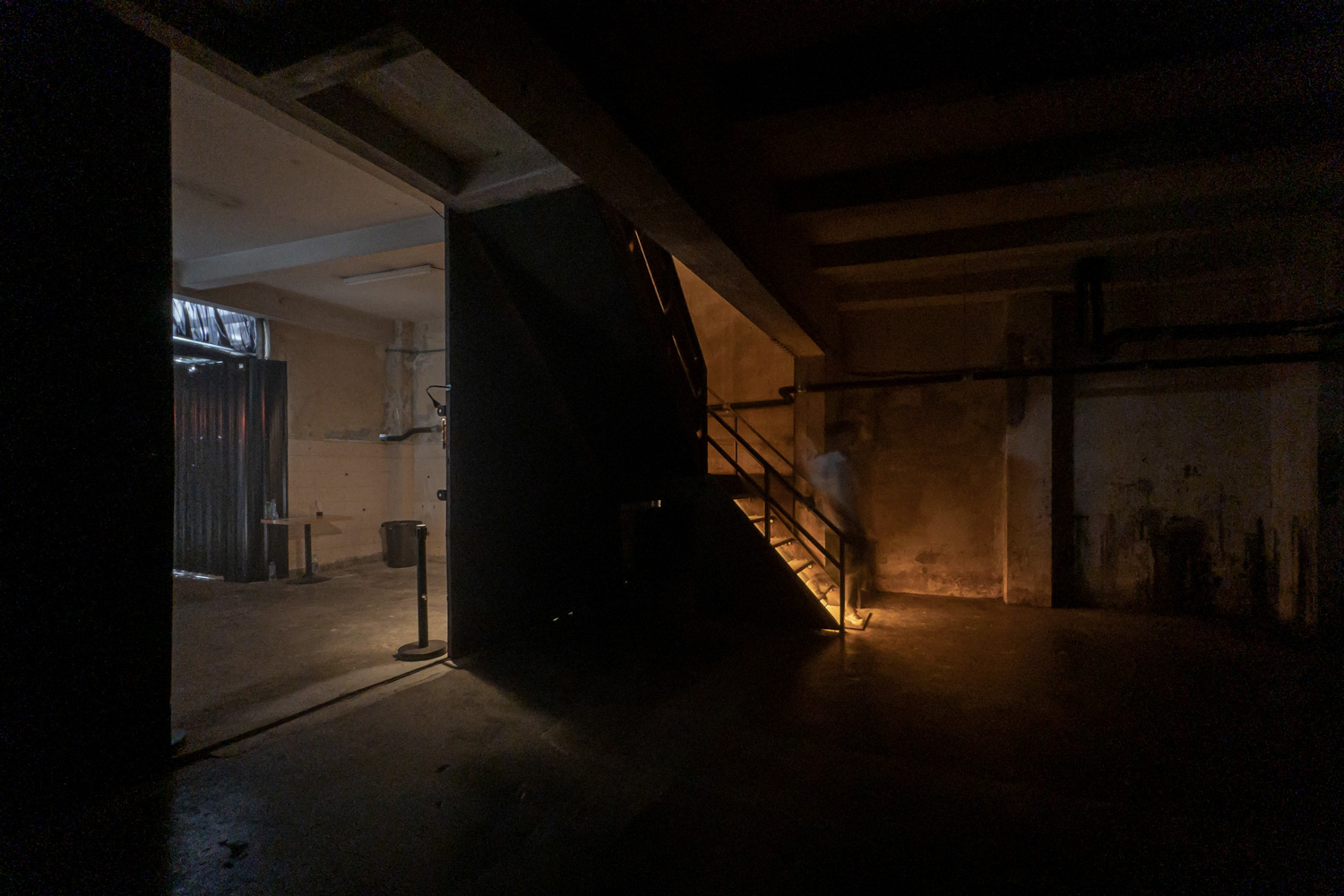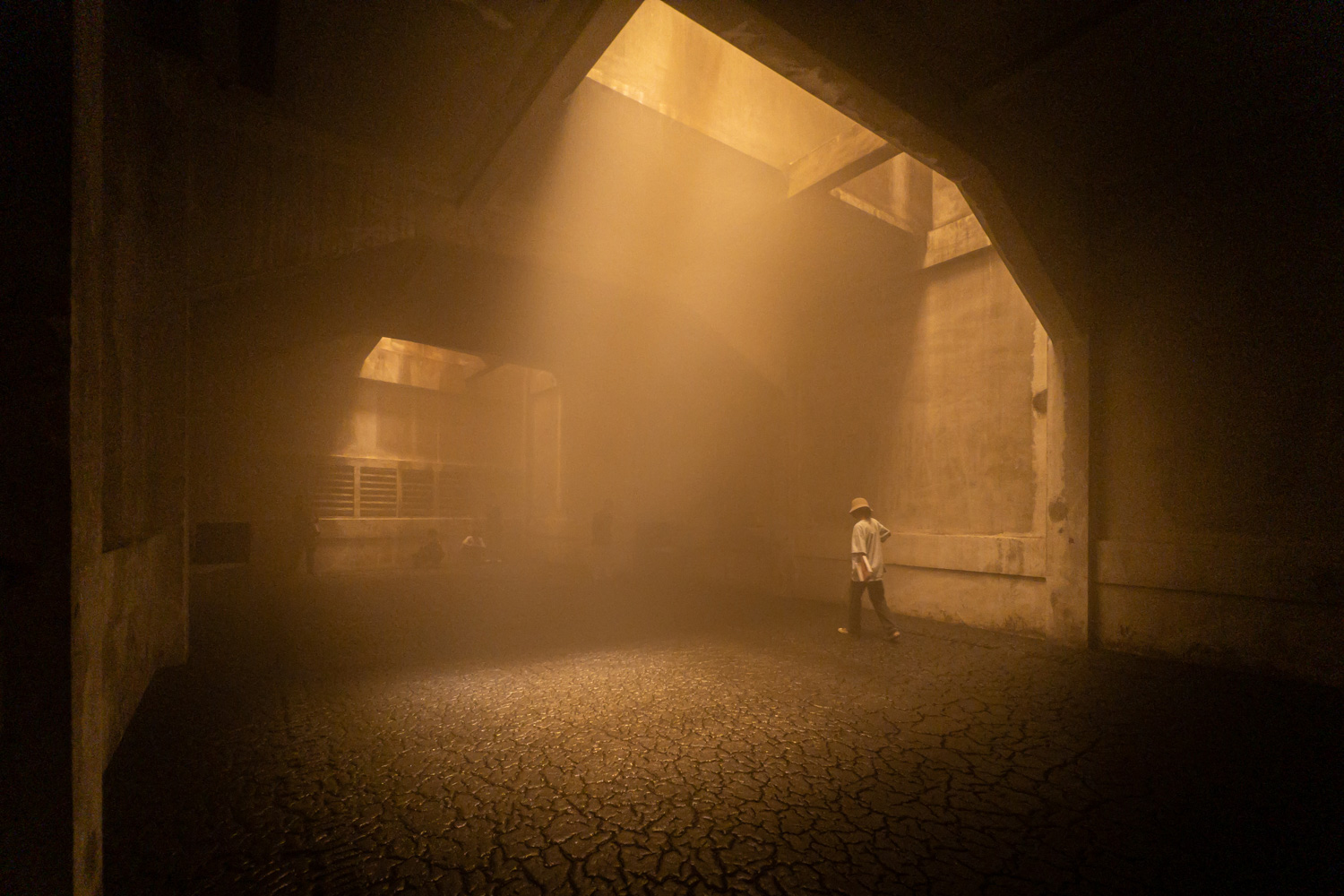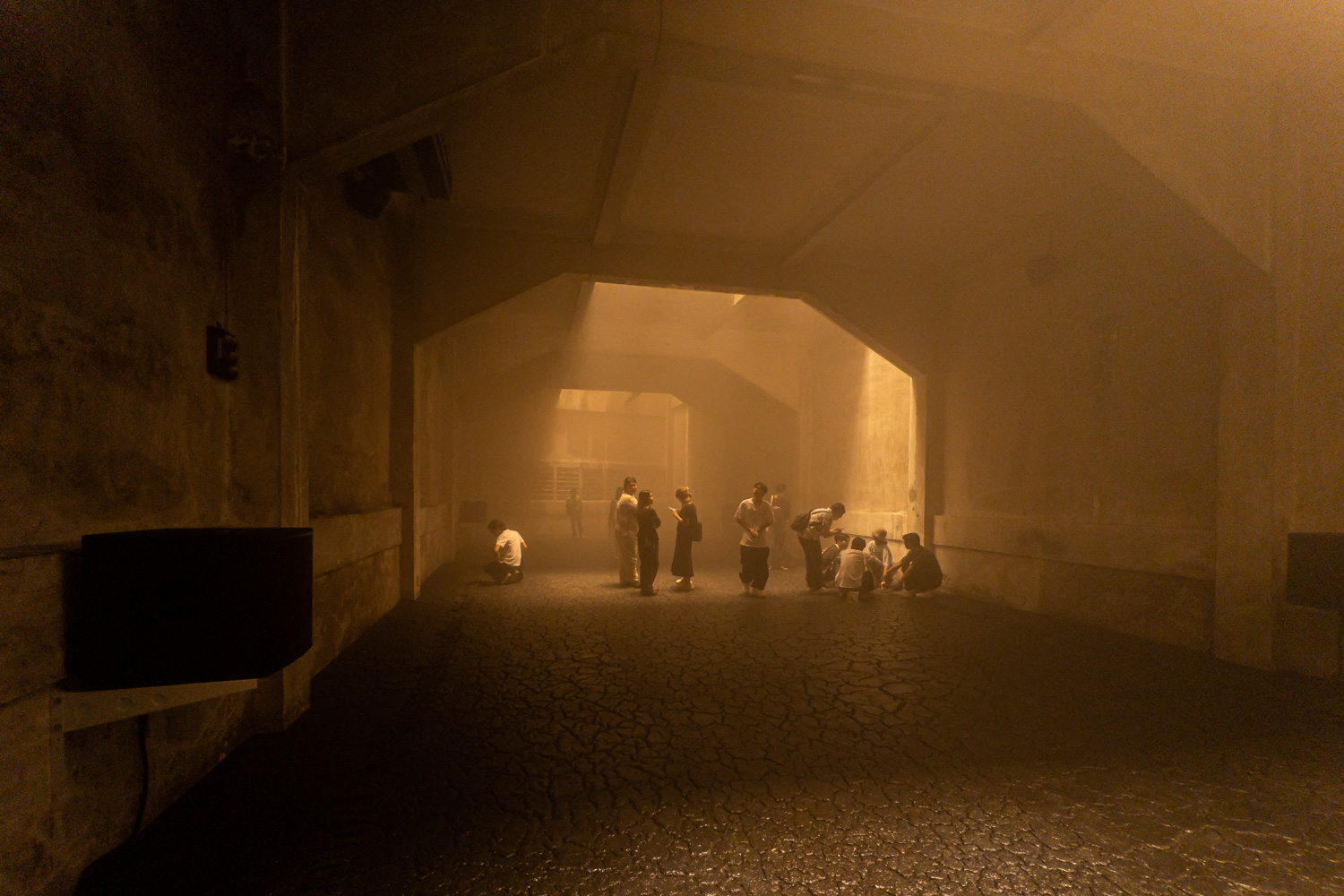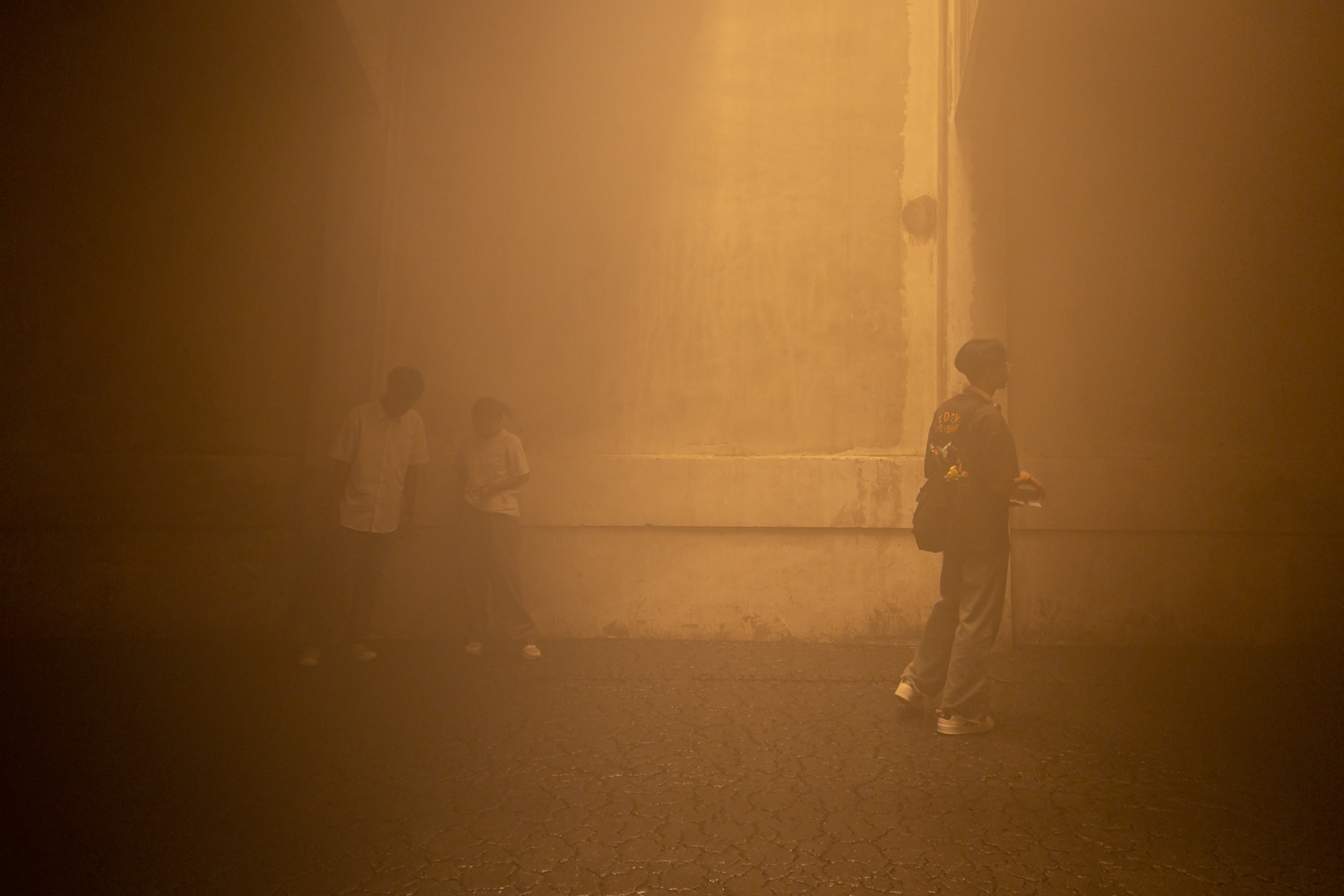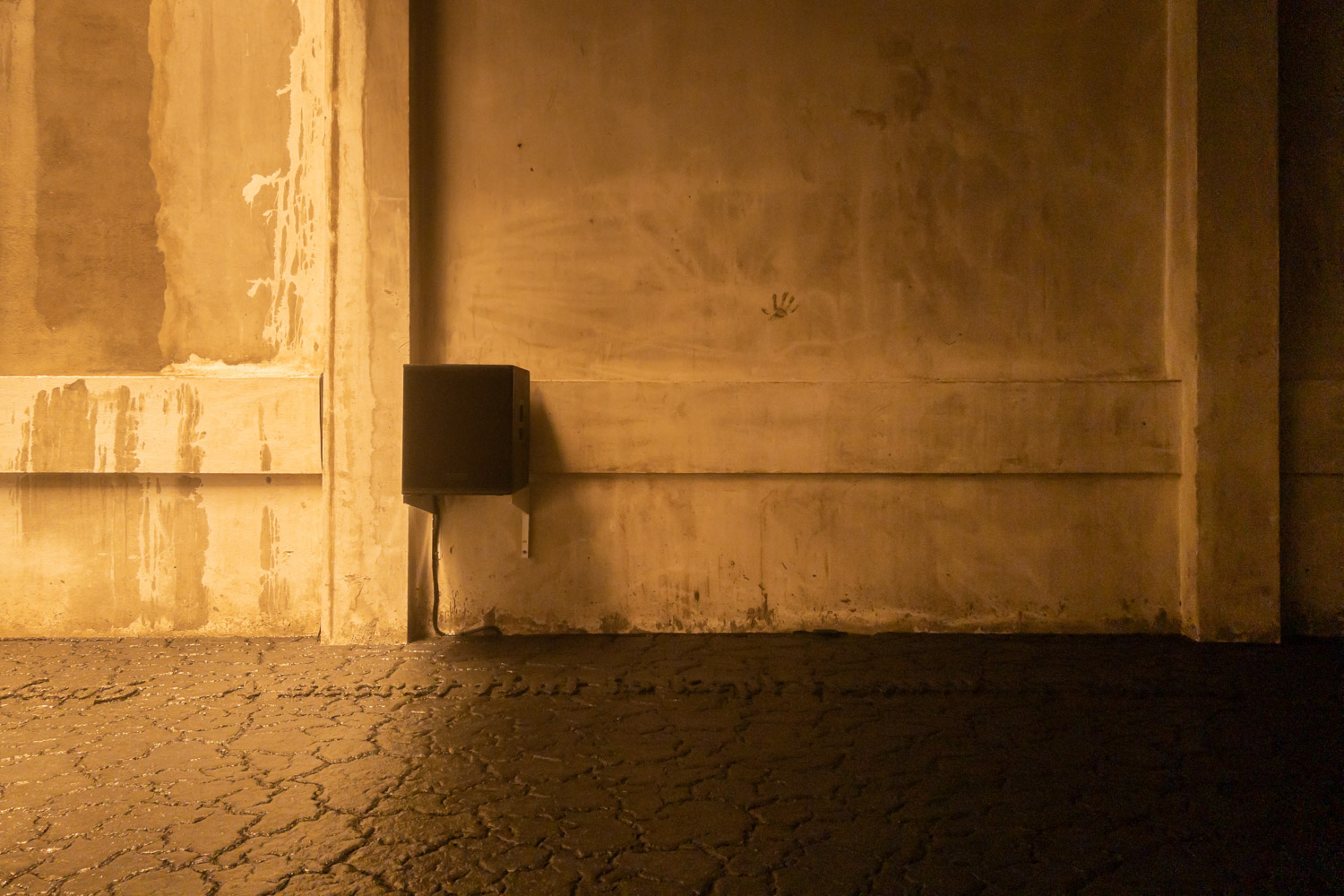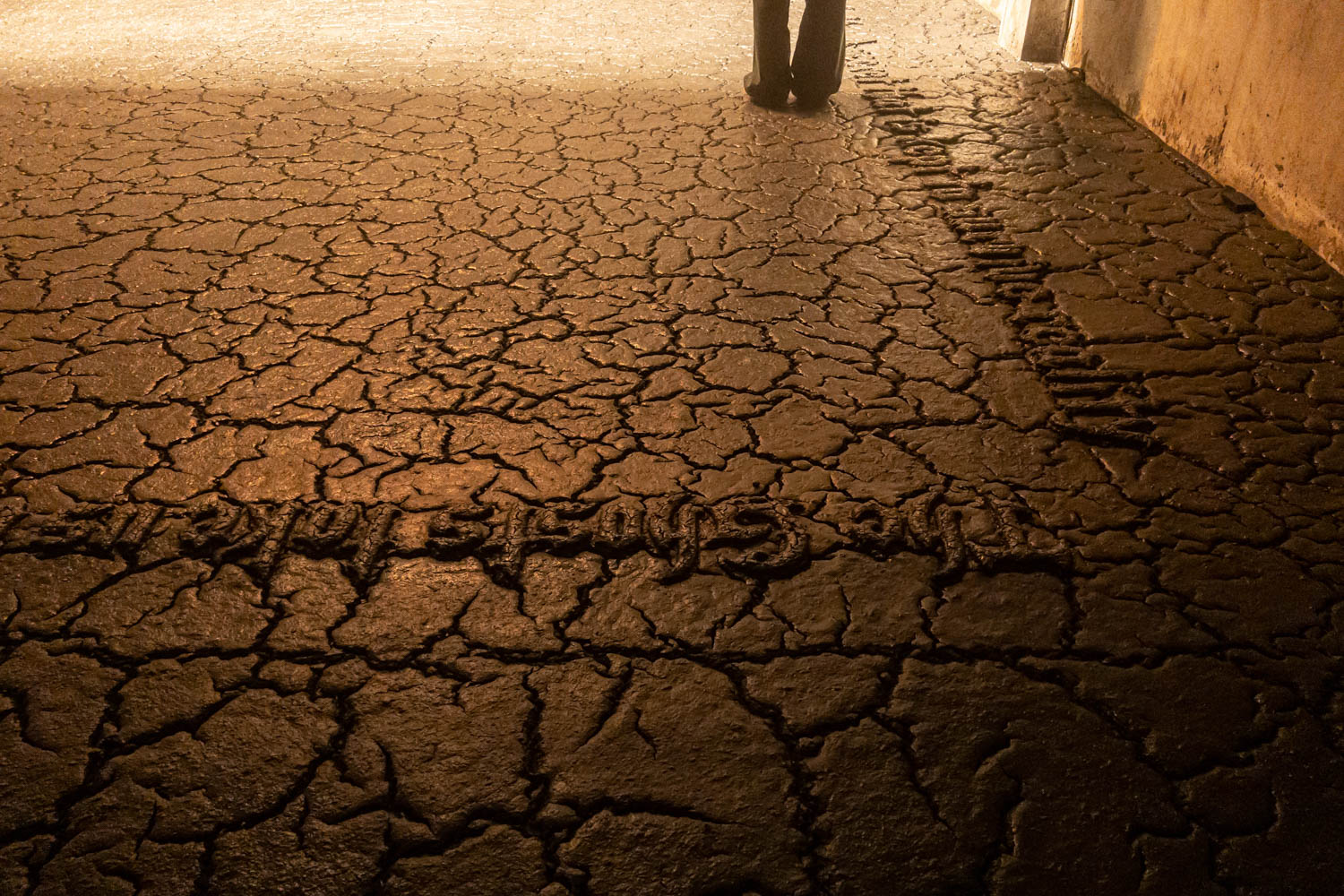
‘NOSTALGIA FOR UNITY’ BY KORAKRIT ARUNANONDCHAI REVEALS THE DELICATE AND COMPLEX INTERCONNECTIONS WITHIN THE SPACE HIGHLIGHTING THE BOUNDARIES BETWEEN THE ARTWORK AND THE EXHIBITION SPACE
TEXT: KANDECH DEELEE
PHOTO: KETSIREE WONGWAN
(For Thai, press here)
In the ecology of art, exhibition spaces often exist in the ‘background,’ propelling and supporting artworks to fully engage in the foreground. This has led to the popularity of the ‘white cube’ aesthetic, where exhibition spaces reduce themselves to mere empty rooms to prevent specific conditions of the space from interfering with the meanings of the artworks. Thus, the artwork and the exhibition space maintain a careful distance from each other, turning the space into a ‘negative space’ waiting to be imbued with meaning by the artwork.
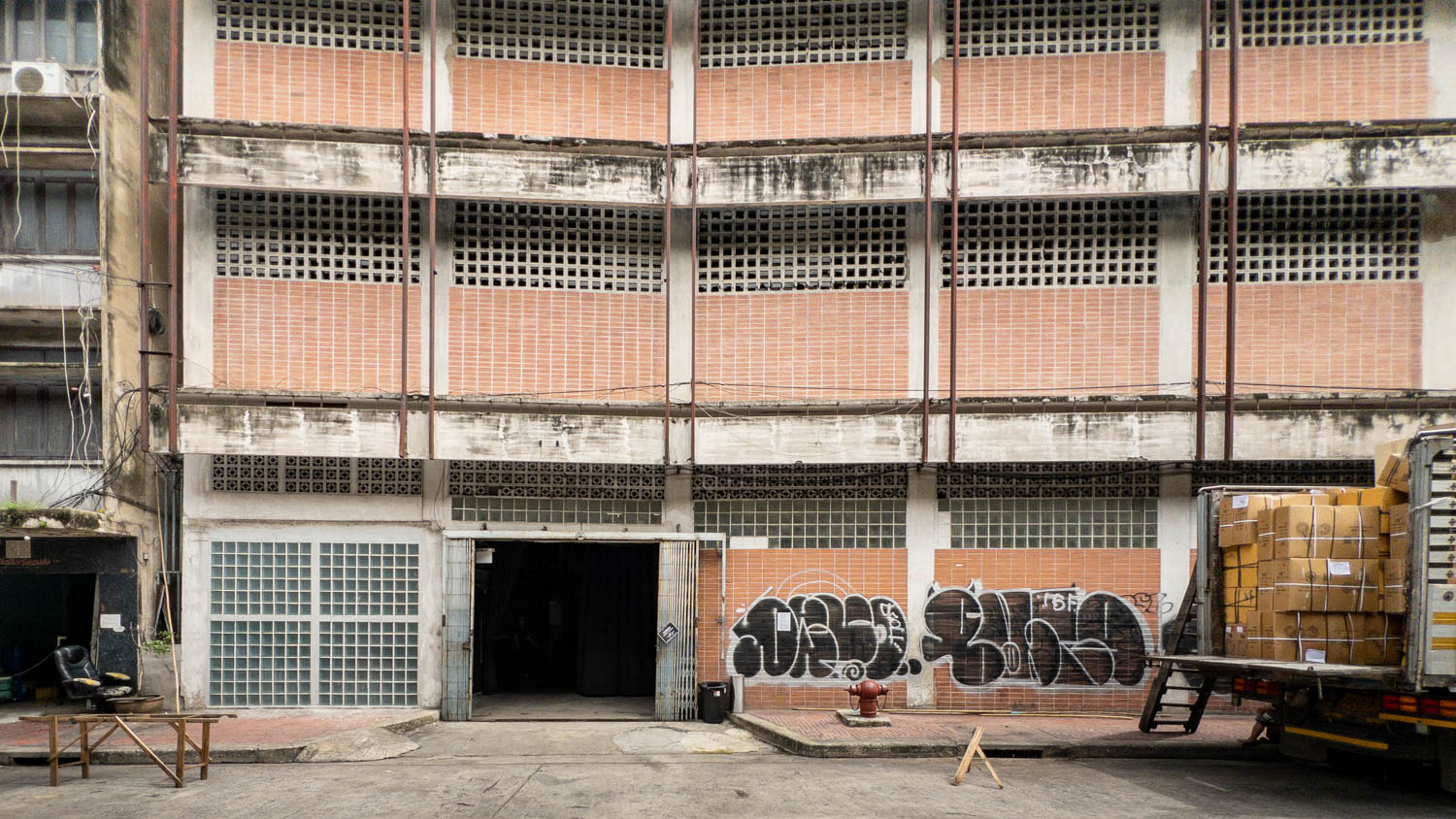
The exhibition ‘nostalgia for unity’ by Korakrit Arunanondchai, held at Bangkok Kunsthalle, explores the transformative potential of the space itself to reveal the delicate and complex interconnections within it. It highlights the boundaries between past, present, and future, as well as between the artwork and the exhibition space, extending to the divisions between history and art.
Korakrit transformed an old hall into a space where temporal layers from the past, present, and future overflow their original boundaries to coexist within the same area. He converted the entire floor of the hall into a blackened, cracked surface that resembles burnt ash. This transformation extended to the lighting, which cast a burnt umber glow throughout the room, complemented by dense, swirling smoke that filled the space. All these elements reference the history of the exhibition venue, once known as the Thai Wattanapanit building, which suffered a devastating fire in the year 2000 and has been abandoned ever since.
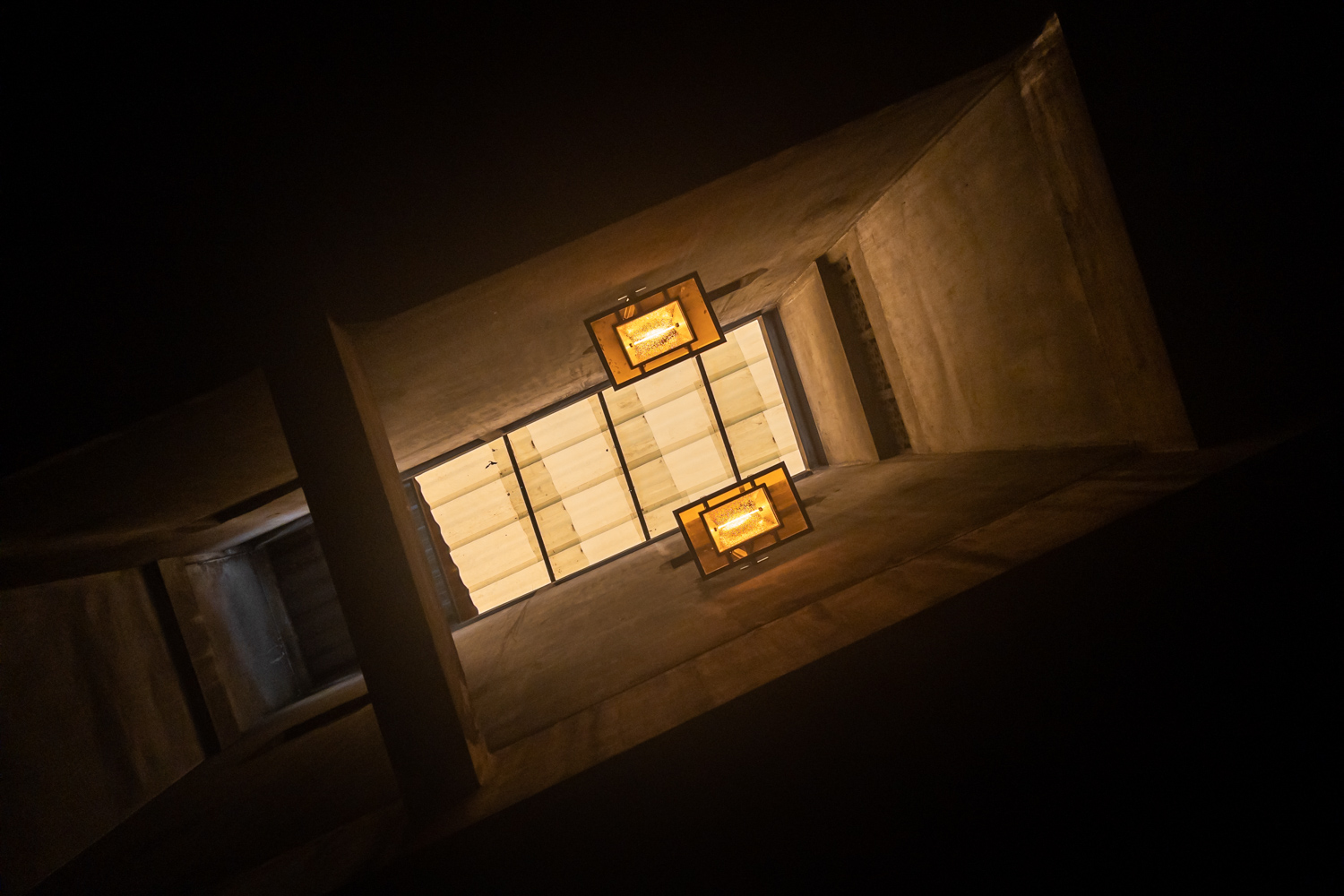

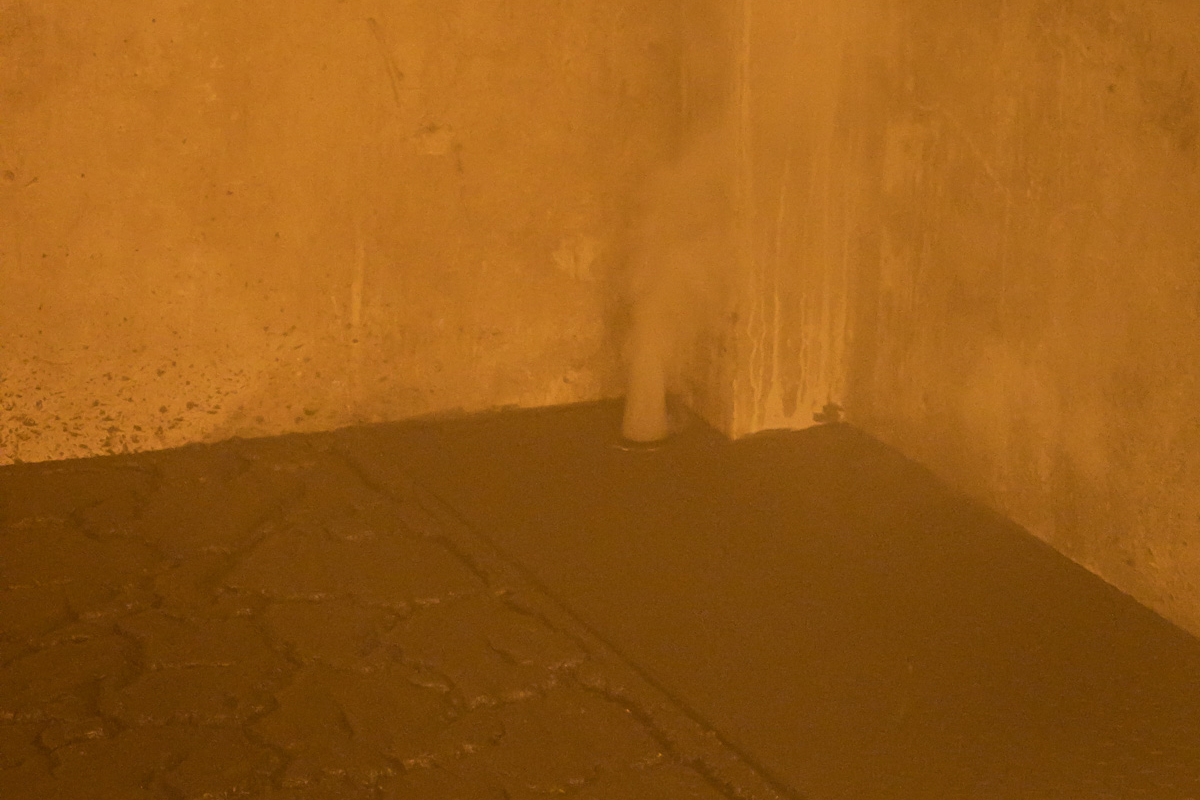
When Korakrit intertwines history with art, the flames that once devoured the edifice do not signify a conclusion. Interestingly, Korakrit does not merely select an ‘event’ from the past to retell; rather, he deftly weaves this narrative into the creation of a ‘situation’ within the exhibition space itself. Although the physical fire has long been extinguished, the artist reignites it through the spirit of art, breathing new life into the derelict building as an art space. In his hands, the destructive essence of fire metamorphoses into a vital creative force, mirroring the mythical resurgence of the phoenix rising from its ashes. In doing so, he challenges the boundaries between death and rebirth through art’s transgression, articulated by the text emerging from the visibly cracked surfaces within the room—a narrative that dialogues with the cyclical interchange between birth and death, decay and revival, from ghost to human. From this, the art space has arisen from the ashes of a building that had long lain dormant.

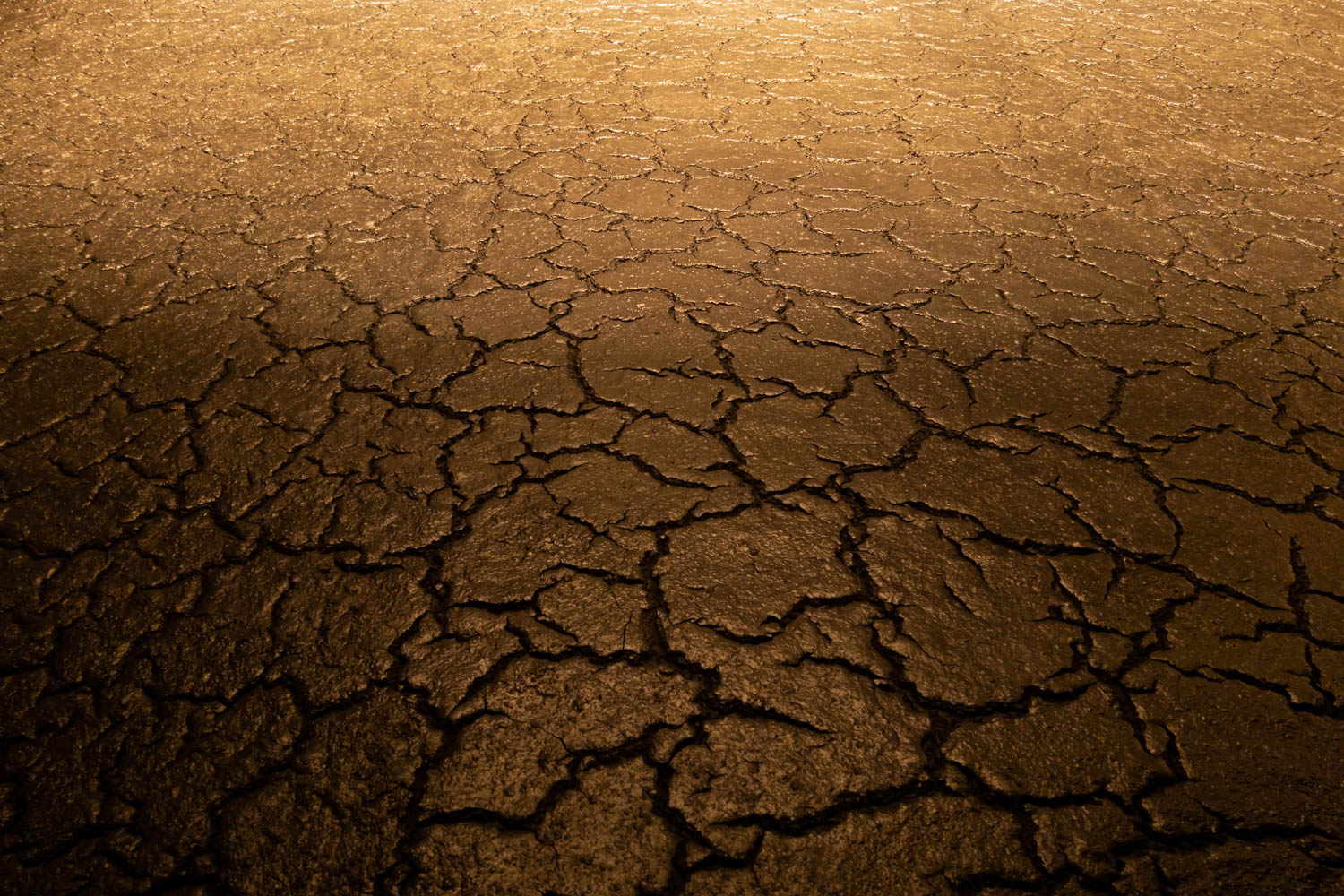
Furthermore, Korakrit has effectively blurred the distinction between the exhibition space and the artworks, melding them into a unified entity. This is evident in ‘nostalgia for unity,’ where the works are not presented as isolated pieces. Instead, viewers do not simply face individual artworks displayed within a space; they encounter a space that transforms into the artwork itself. Thus, the exhibition plays with the dualities of absence and presence. Emptiness is not a detachment from art but is seamlessly woven into its very fabric. The exhibition becomes a space that is simultaneously open and filled, making it impossible to distinctly discern where the foreground ends and the background begins.

What Korakrit does is transform the blazing fire into a sacred flame. He orchestrates a series of text into lines that trace the periphery of the exhibition space, weaving a mystical circle that summons the past, present, and future into a simultaneous existence within this very locale. Accompanied by a chorus of chants that resonate between heaven, the human world, and the underworld, a unique realm is formed where old boundaries dissolve, merging into one space. Through the sorcery of art, spectators are afforded a dual encounter: the vestiges of the old edifice, once devoured by flames, and the vibrant emergence of art birthed from the artist’s own fiery spirit. Standing within the ring of words– the space in which the viewers stand grants them the agency to escape the confines of timelines imposed by the external world.
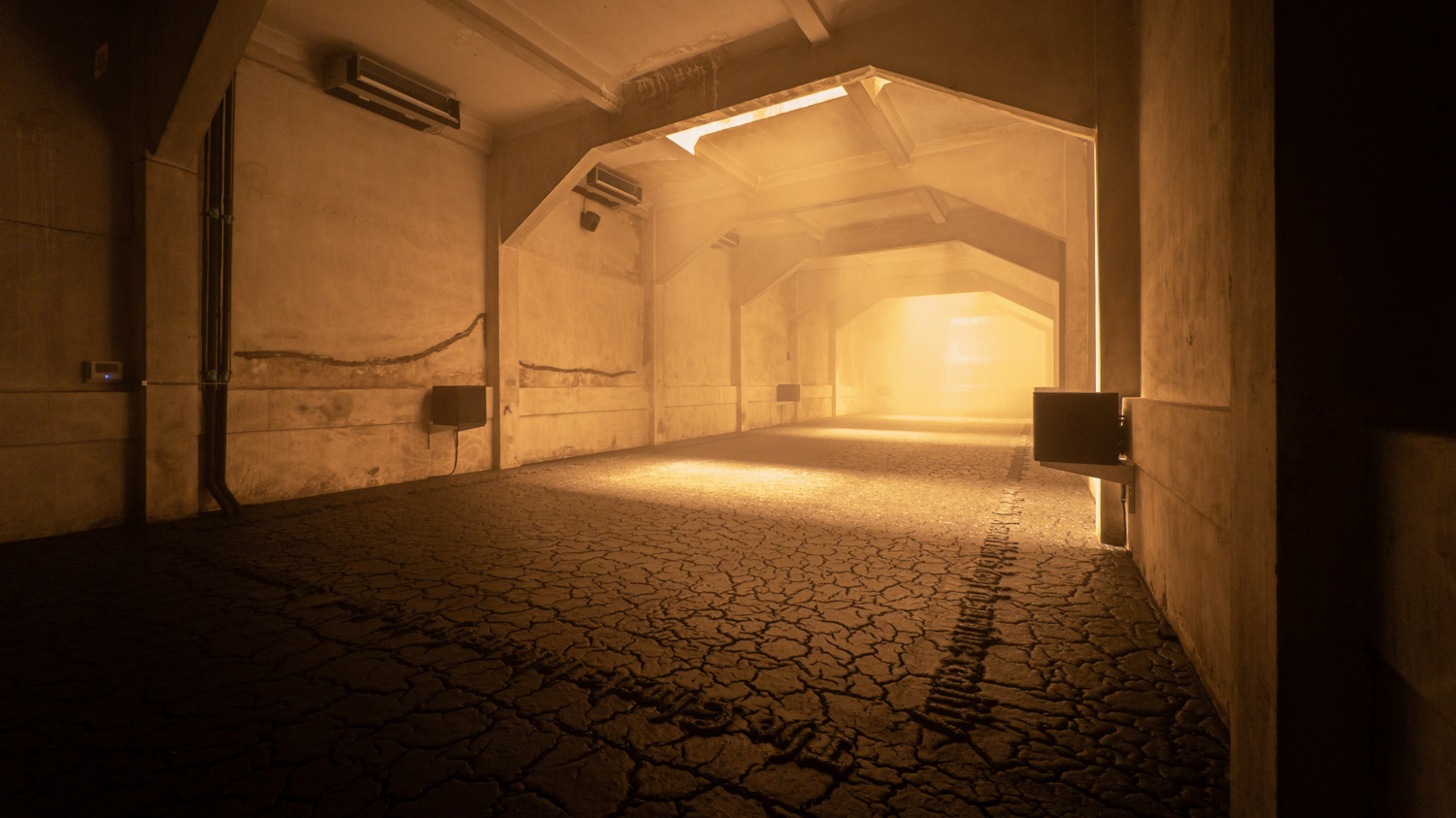
The arrangement of the text forms a cycle without a discernible beginning or end. As viewers engage with the emerging text, they can only see the segments immediately preceding and following their position, with no definitive indication of whether these segments pertain to the past or to a future yet to arrive. This creates a continuous ouroboros cycle, where the concepts of birth and death are inextricably linked. This challenging reading experience complements the exhibition’s overarching theme of the continuity of time, which, although seemingly disjointed, simultaneously achieves a sense of unity.
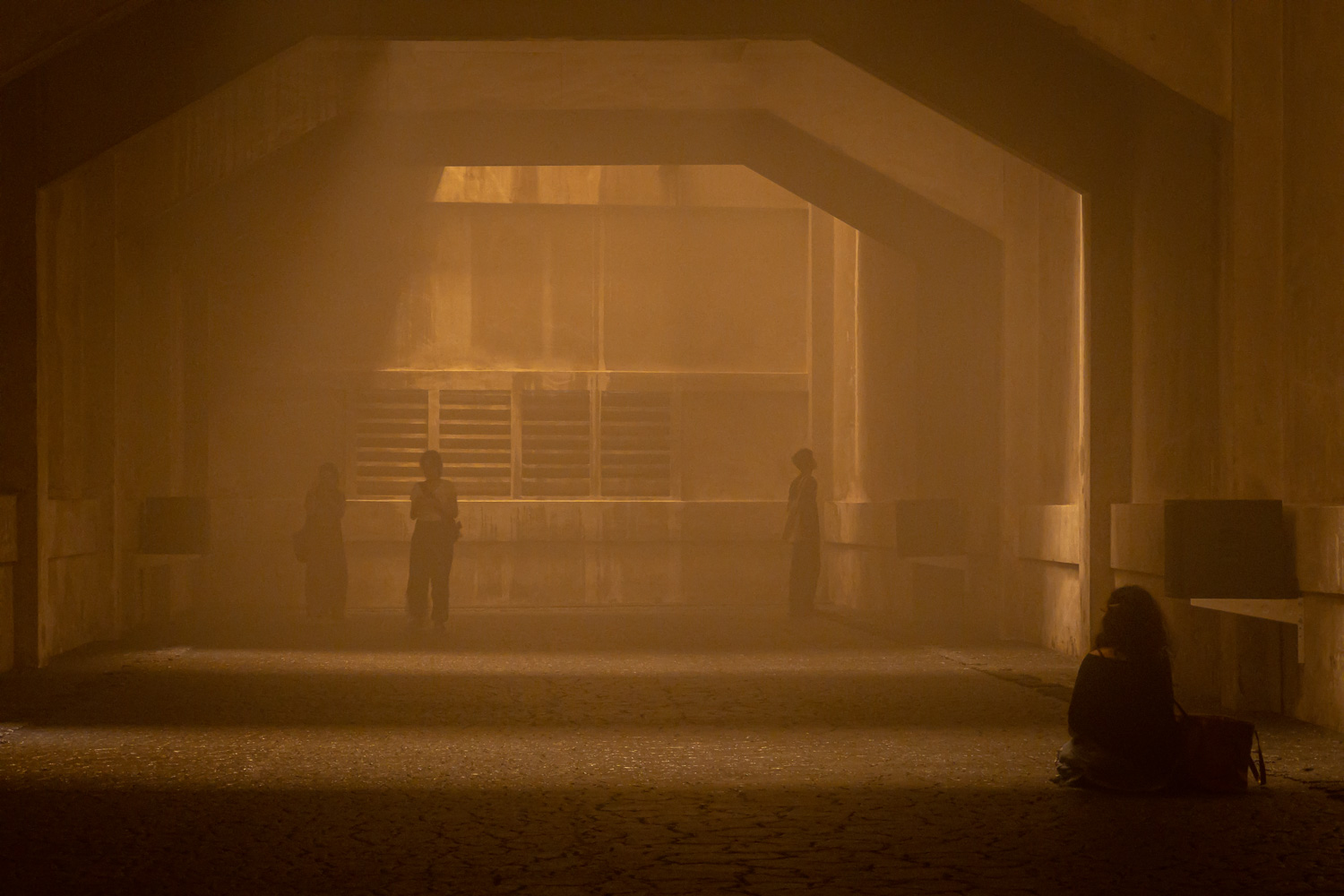
‘nostalgia for unity’ explores a moment in space that merges the conditions of the past with the possibilities of the future. Korakrit depicts that all entities arise from the death of another, and these entities exist to perpetuate a cycle of rebirth upon their own demise. The perception and understanding of art and history is thus not a linear separation into discrete segments, but the recognition of a space deeply interconnected with infinite possibilities. Everything emanates from the ashes of the past, waiting to return to ash in the future–‘By the sweat of your brow you will eat your food until you return to the ground, since from it you were taken; for dust you are and to dust you will return.’ (Genesis 3:19.)
The exhibition ‘nostalgia for unity’ is on display at Bangkok Kunsthalle from May 31 to October 31, 2024.

